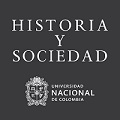Call for articles for the thematic dossier: Other Southern Routes: China, Latin America, and the Caribbean Relations
Presentation
Other Southern Routes: China, Latin America, and the Caribbean Relations
The deepening of relations between Latin America and the People's Republic of China is part of the reordering of the contemporary world-system towards "multipolarity" or a "multi-nodal world." This shift, still in development, is characterized, among other things, by challenging the neo-colonial and imperialist assumptions that have supported the West’s unipolar hegemony over the global South since the end of the Cold War.
Since the 1949 revolution that brought the Chinese Communist Party to power and ended the so-called "century of humiliation," the world has witnessed the global rise of the People's Republic of China as a major power. This process gained momentum with the economic reforms initiated by Deng Xiaoping, which intensified the country's industrialization and economic growth, contributing decisively to raising the Chinese economy to its current levels. Today, the People's Republic of China stands as the world’s largest exporter of industrial goods, holds the largest share of global research and development investments, and is simultaneously the world’s largest importer of raw materials and energy.
Since Deng Xiaoping's initial speeches in the late 1970s, the People's Republic of China has placed significant emphasis on South-South relations. These relations are presented in the country’s official documents as a form of "win-win" cooperation, meaning mutually beneficial outcomes. This perspective, according to Chinese thought, advocates replacing the subjugating and vertical relationships established by Western imperialism with a horizontal model of cooperation that fosters the reciprocal development of countries.
However, this perspective has been the subject of much controversy. In this debate, some authors disagree with this interpretation and even denounce the imperialist characteristics of China’s global actions. Others argue that China operates differently from past colonial powers and promotes a fairer international exchange system.
The intensification of relations between the global periphery and semi-periphery with the People's Republic of China takes place within the broader context of strengthening South-South relations, in which associations like BRICS and ASEAN stand out. However, this process is not without geopolitical impacts, generating crises and disputes, as seen in the Russia-Ukraine war, conflicts in the Middle East, and tensions surrounding Taiwan.
The People's Republic of China is already one of the main, if not the leading, trade partners for many Latin American countries, some of which are part of the New Silk Road (Belt and Road Initiative). However, Latin American exports are mostly limited to raw materials, while imports generally consist of industrialized goods. In light of this situation, it is necessary to better understand these relations, comprehend Latin America’s role, and assess integration pathways to ensure that mutually beneficial relationships are truly established.
Beyond economic ties, many analysts and researchers question other dimensions of integration between China and Latin America. Among these are cultural dialogues, knowledge exchanges, collaboration to address the environmental crisis, and overcoming challenges such as poverty and underdevelopment. However, to date, these aspects seem to remain secondary to economic and commercial relations in the integration agenda.
Papers addressing these and other related themes, as well as reviews of theoretical, methodological, and critical contributions, are welcomed to compose the issue!
The publication rules can be accessed at: https://periodicos.unb.br/index.php/repam/about/submissions#authorGuidelines
Texts should be sent through the Journal's website at: https://periodicos.unb.br/index.php/repam/about/submissions
Timeline
Receipt of articles to compose the dossier: June 30, 2025;
Pre-evaluation of articles received: July 12, 2025;
Deadline for receiving evaluations: August 30, 2025;
The approved articles will be sent for author revision, journal review, and editing until: September 14, 2025;
Estimated publication date for Volume 17, Issue 2, 2023: September 2025















